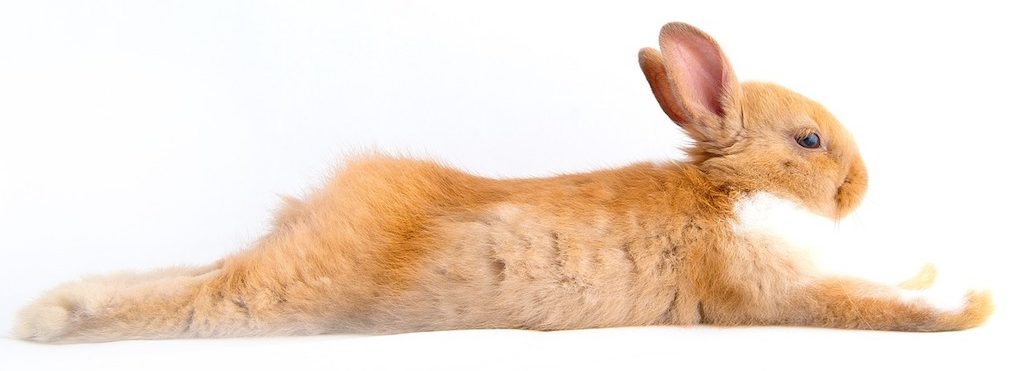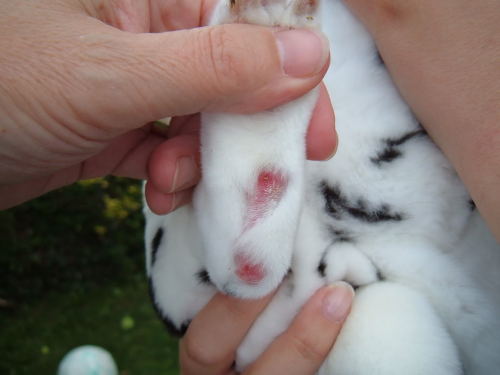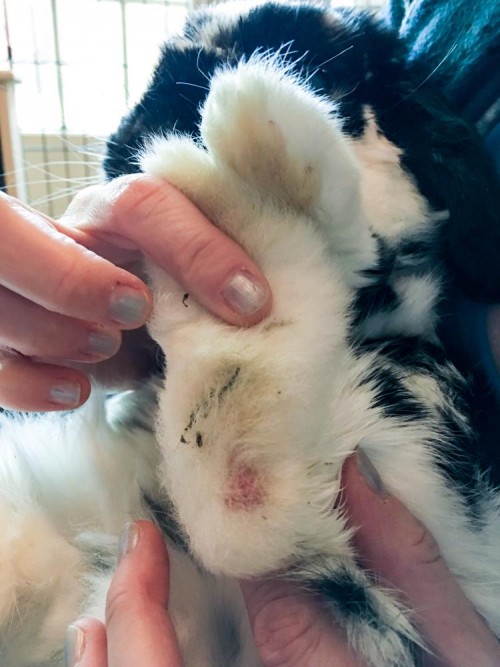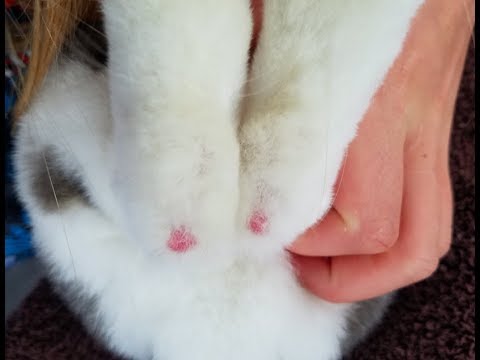Rabbits are one of the easiest pets to keep. These cuddly furballs have an average lifespan of eight to fourteen years, and so they will be by our side for a long time. The only catch is that we need to take care of their health and not take risks when something doesn’t seem right.
A common condition amongst rabbits is something known as sore hock. This condition is so common that it is often overlooked by rabbit owners when it shouldn’t be. In its mildest form, sore hocks will wear the fur away from the underside of your rabbit’s foot. If it goes untreated and takes on a more severe form, the skin starts to wear away and paves the way for an infection leaving your rabbit with a sore leg and other possible ailments.
So, what exactly is sore hock, and what causes it? We have all the answers to your rabbit-related queries. Read on to find out all the answers to your questions.
What are hocks?

Hocks are an important part of your rabbit’s anatomy. Rabbits rely on their hocks to jump and hop around. You can compare a rabbit’s hocks to your ankle. The ankle joint allows our leg and foot to move backward and forward. Your rabbit’s hock works similarly. When rabbits hop, they sink back into the hock, and then they use the momentum created as a means to push themselves forward.
It should come as no surprise that if the bottom of your rabbit’s hock is sore, it will prove to be a hindrance to your rabbit’s movements. Sore hocks make hopping very painful for your bun.
What causes sore hocks?

Sore hocks are common in rabbits who are living in an environment that isn’t suitable for their delicate hocks, and since they don’t have paw pads, there is no protection for their feet. Out in the wild, rabbits have soft surfaces such as sand, soil, or grass to sink their feet into. At home, if they don’t have similar soft surfaces, they will suffer from this condition. There are, however, some other causes as well. These include:
Long claws: if your rabbit’s claws are overgrown, this can force them to sink into your rabbit’s heel when they are hopping. As this goes on for a while, this puts too much pressure on the hocks, and as a result, your rabbit will develop pressure ulcers.
Obesity: as per research, an overweight rabbit is more likely to develop sore hocks than a normal weight bun. Too much weight means too much pressure on the hocks when your obese bunny tries to hop. If your overweight rabbit is living in a cage with a wire mesh floor, that will most definitely cause sore hocks for your rabbit.
Health problems: health conditions that cause pain, such as arthritis, can lead to sore hocks. It will make jumping difficult and awkward for your rabbit and thus will put an unnatural amount of pressure on their foot. With time this causes the fur to wear away from their feet and will cause a pain ulcer to form. If the pain conditions are severe, it may discourage rabbits from moving around, and as a result, they might spend too much time on dirty bedding, which in itself is a possible cause of sore hocks.
Dirty or wet bedding: if your rabbit’s bedding isn’t cleaned up on the regular and it is urine-soaked, it can lead to health complications such as urine scalding. If this reaches their hocks, their skin might become tender, sore and can also make the rabbits vulnerable to flystrike. The more their urine scalded skin will press on the floor, the more their skin will tear, and the more likely they get infected with bacterial infections.
Missing patches of fur: the fur on the bottom of a rabbit’s foot is a source of protection for them. There could be several reasons why the fur from their feet can reduce. These include urine scalding, stress, allergies, mange, or a rough carpet. The lesser the fur, the more the chances of sore hocks.
Sore Hock Symptoms:

Cases of sore hock can range from mild to severe, depending on the cause and how long it has been left untreated. Symptoms, in order of mild to severe cases, include:
Irritation and soreness also cause hair loss around the heels, hard and red calluses to form on the hocks. In mild cases, the pain may not be visible, and your rabbit may just be a little less active than before.
Inflammation happens in slightly more severe cases, especially if sore hock has gone unnoticed for a while. This is one of the more visible symptoms, and signs of inflammation include sore and red calluses, slight bleeding, peeling skin, and scabs. Your rabbit will show signs of lethargy as well.
Pyoderma is one of the more severe symptoms, and when the connective tissue and deeper cells become inflamed, there will be a possibility of a skin infection on a superficial infection. Other signs include blisters, scabbing, and bleeding. Your rabbit may whimper and refuse to eat or drink, and there may be a discharge, although it will not be smelly.
Deep infection is when the problem reaches the joint tissues and ends up affecting the bone marrow, which in turn cuts the blood supply of the bones. There will be visible signs of distress, including immobility, teeth grinding, a wound with smelly discharge, and bleeding. If sore hocks reach this stage, it can be life-threatening.
Can Rabbits Die of Sore Hocks?
Although it isn’t usually fatal, sore hocks have to be diagnosed and treated as early as possible. If sore hocks go untreated and they reach the third or fourth stage, it becomes almost untreatable and has a chance of causing further health issues. If all of these things accumulate, they can kill your bun!
